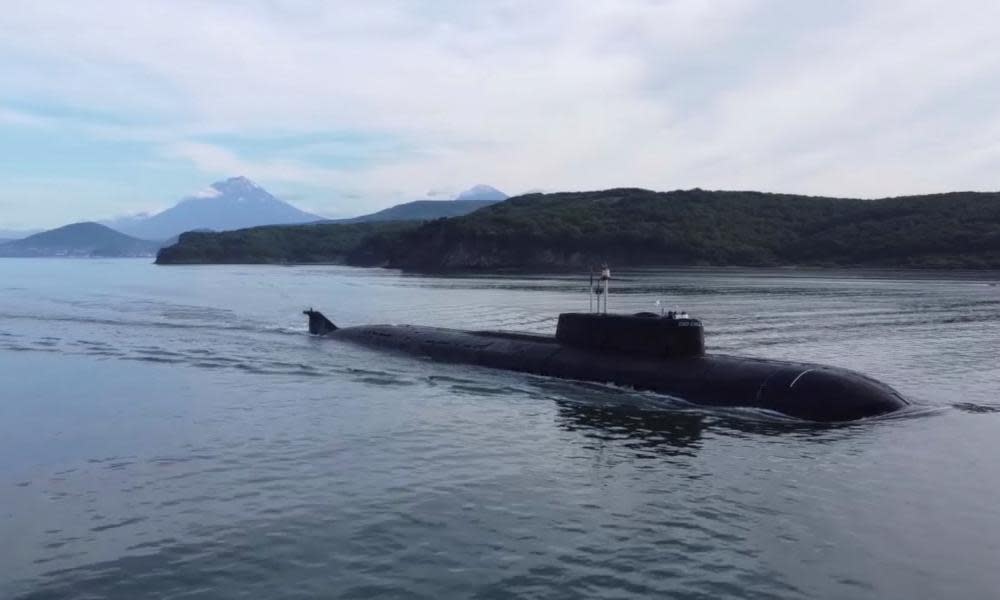Vladimir Putin’s latest frightening gambit lies at the bottom of the ocean

“Once is happenstance,” wrote James Bond’s creator. “Twice is coincidence. Three times, it’s enemy action.” As European politicians and security agencies ponder the three explosions that caused leaks in the two Nord Stream gas pipelines under the Baltic Sea on Monday, they may find this adage of Ian Fleming’s helpful in resolving their doubts about who was responsible.
The strange thing about Putin’s assault on Ukraine was that he clearly hadn’t consulted Valery Gerasimov, the guy who in 2013 had radically reconfigured Russian military doctrine at his behest (and is now chief of the Russian armed forces). Gerasimov’s big idea was that warfare in a networked age should combine the traditional kinetic stuff with political, economic, informational, humanitarian and other non-military activities. This would mean, for example, that before firing a shot, you should first use social media and other network tools to misinform, confuse, polarise and demoralise the population of your adversary. In that way, democratic regimes would find it more difficult to motivate their citizens for combat.
Putin’s invasion in February ran directly counter to this doctrine; perhaps Gerasimov was not part of the inner circle of trusted cronies on whom Putin initially relied. Instead the assault was a 1940s-style blitzkrieg, except in Technicolor rather than black and white. And it hasn’t worked. So as he returns to the drawing board, it’s conceivable that the Russian leader has, finally, been talking to Gerasimov. If that’s the case, then their conversations will have rapidly turned to topics such as deniability, asymmetric warfare and identifying the critical weaknesses of their western adversaries.
Which in turn means that they will be thinking less about pipelines and much more about the undersea fibre-optic cables that now constitute the nervous system of our networked world. There are now about 475 of them and they carry more than 95% of all the data traffic on the global internet – $10tn money transfers and at least 15m financial transactions every day. The Telegeography site maintains a terrific up-to-date map of them all.
There are some strange metaphorical ironies at work here. We talk casually about keeping our data “in the cloud” – conjuring up images of fluffy clusters of water-vapour somewhere above our heads. But in reality most of the internet is under water. When you upload a photograph from your smartphone to the “cloud” it may first go to an air-conditioned shed somewhere on terra firma, but is then transferred or backed up via undersea cables to another shed somewhere else on the planet.
These cables are the critical infrastructure of the western world. They are funnelled into the sea via often poorly protected entry points on remote ocean coastlines. For the first few miles, they look fairly substantial because of the protective coating needed to protect them from the buffeting of tides, rocks and shallow water, but once out to sea a cable may be just the thickness of a garden hose.
Rishi Sunak concluded that the vulnerability of the undersea cable network was ‘nothing short of existential’
The cables mostly belong to a largish number of private companies, and so – up to now at least – have been largely neglected or ignored by governments. Some of them are owned by tech giants: Facebook, for example, is the owner and installer of the longest cable of them all – its 2Africa cable will be 45,000km long when completed, and will directly link Africa, Europe and Asia. Once cables are in international waters, maritime law – which is still rooted in an era when communications cables were peripheral rather than central – doesn’t provide much for their security. On the open sea, therefore, barriers to malicious interference are relatively low – especially for the navies of nation states.
Lying on the ocean floor, cables are obviously vulnerable to accidental damage. One industry source claims that only about 100 breaks a year are caused by fishing boats and trawlers. Until 2017 it seems that malicious attacks were rare. In that year there were two on transatlantic cables – UK to US and France to US – which were, er, under-reported at the time, but which may have been the trigger for a study written by none other than Rishi Sunak for the thinktank Policy Exchange, which concluded that the vulnerability of the undersea cable network was deeply troubling and that the danger of an attack on the system was “nothing short of existential”.
In his foreword to the report, Admiral James Stavridis, a former Nato supreme allied commander, pointed out that “Russian submarine forces have undertaken detailed monitoring and targeting activities in the vicinity of North Atlantic deep-sea cable infrastructure”. Which is interesting for two reasons. One is the conversations that are now doubtless going on in the Kremlin. The second is that Stavridis is the co-author of a fascinating thriller, 2034: A Novel of the Next World War, in which the trigger for catastrophe comes when a Russian ship severs 30 undersea cables, thereby cutting the US off from the world. I doubt that President Putin has read it. But I bet General Gerasimov has.
What I’ve been reading
Glutton for punishment
Christopher Sandford has written a compelling review of Kevin Birmingham’s biography of Dostoevsky for the Hedgehog Review.
Rolling in it
Malcolm Gladwell has discovered that Princeton could charge no tuition fees and still prosper. Read the article on his website.
Not a dry eye
Annie Proulx has a lovely essay on Literary Hub about what was lost when the English fens were drained.


